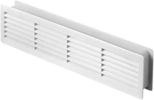- Joined
- 21 Feb 2021
- Messages
- 172
- Reaction score
- 2
- Country

I doubt that will work!Or even during the shower.

I doubt that will work!Or even during the shower.

100% agree..Seriously??? This is a teenage boy. They are incapable of following any instruction. Or will (sub-consciously) do the opposite.
Will not turn the light off either, or put in a new loo roll
Ooooh…don’t get me started…

Yes exactly, even if I run fan for hours it may not make much difference..Generally true, but if the condensation is arising during the OP's son's 30-minute showers (presumably with the light+fan on), I imagine it's probably far too late for any amount of fan 'run-on' to make any appreciable difference!
Kind Regards, John


The access for replacement air is necessary all the time steam is being produced and the fan is running. The door could be left open a little bit while showering, use a chain to prevent it being fully opened when someone is in the shower.Max could do is keep door opened after shower.

 which allows air into the bathroom, however so often the extractor is only fitted to satisfy a building inspector, I know with mother house I was forced to fit one, but it was never used, once I had the completion certificate it was switched off.
which allows air into the bathroom, however so often the extractor is only fitted to satisfy a building inspector, I know with mother house I was forced to fit one, but it was never used, once I had the completion certificate it was switched off.
Switch on a cold water tap downstairs after about 10 mins while he's in the shower. That should remind him "time's up".
If you are having 40 minute long showers, you're going to have condensation problems.these are weekend showers, usual weekday ones are 10 min max. BTW my weekend shower normally cross 40 min. So doubt I could challenge him on this
If "prevent" means "totally prevent" then, in practice, what you say is clearly correct. However, as you imply, a fan which does anything should always 'be better than nothing' (i.e. reduce the amount of condensation), since if it removes at least some of the water vapour-laden air, there will be less of it left to condense on cold surfaces.People think that a fan will prevent condensation; it will not. It merely removes some of the water vapour around its location.
It might be better than nothing - but not much. Only a wind-tunnel would remove it all.
I suspect that is often the case.If other people think their fan does prevent condensation then they probably don't need one at all.
If you need to find a tradesperson to get your job done, please try our local search below, or if you are doing it yourself you can find suppliers local to you.
Select the supplier or trade you require, enter your location to begin your search.
Are you a trade or supplier? You can create your listing free at DIYnot Local
